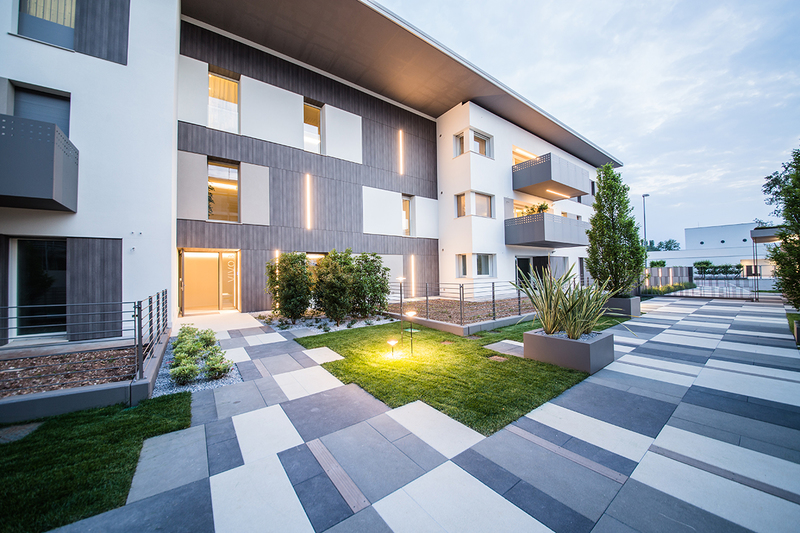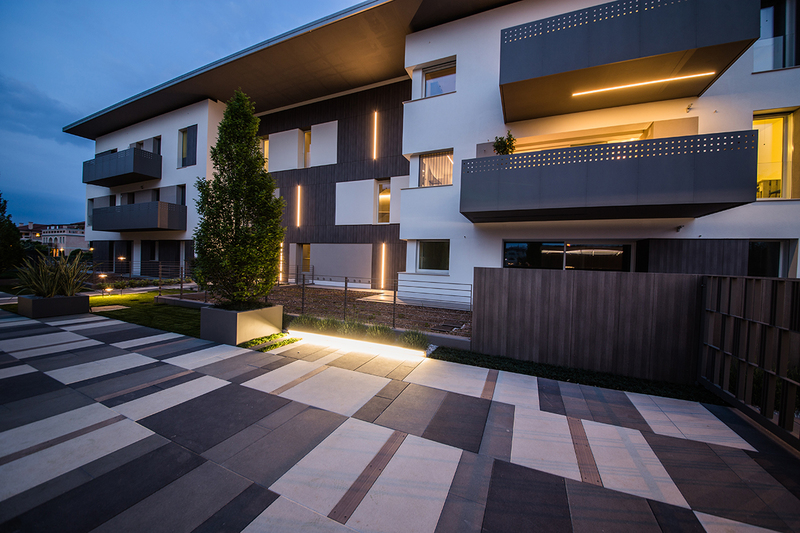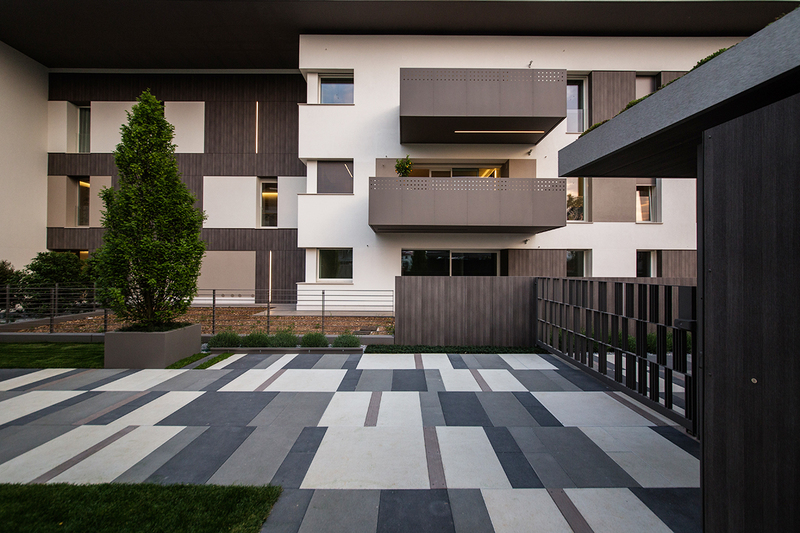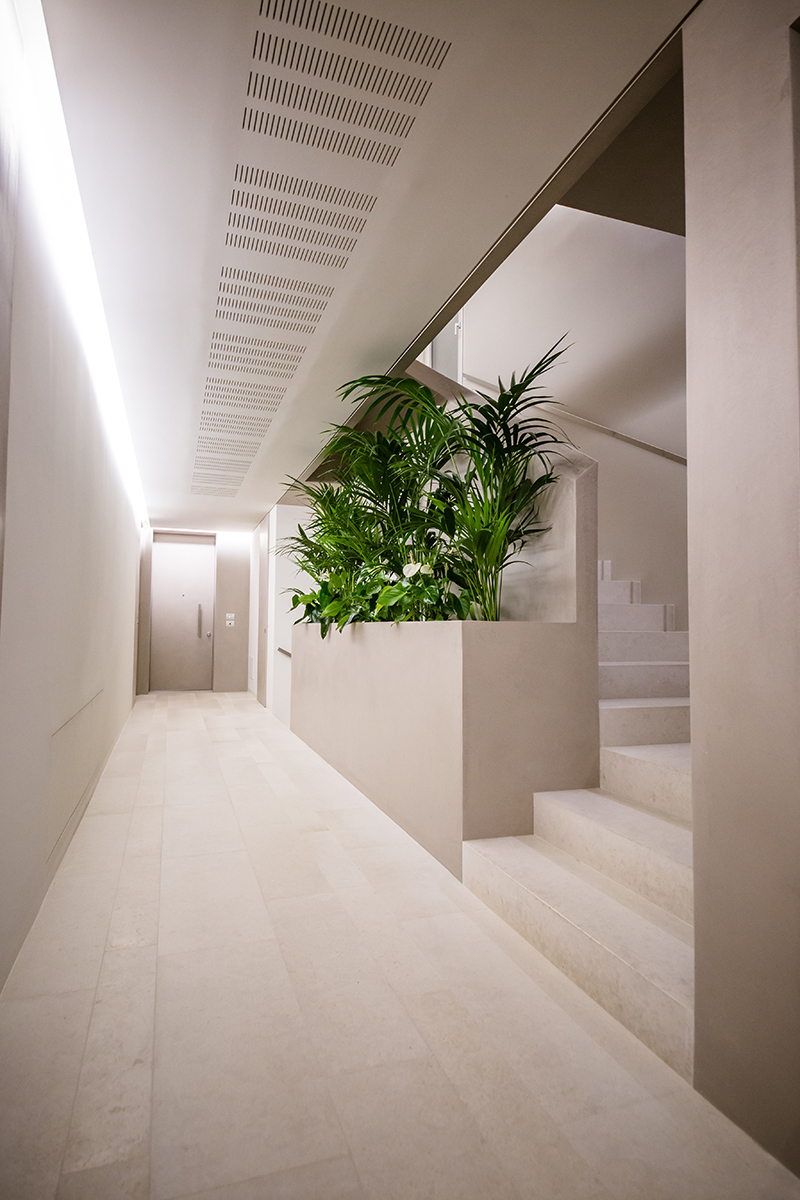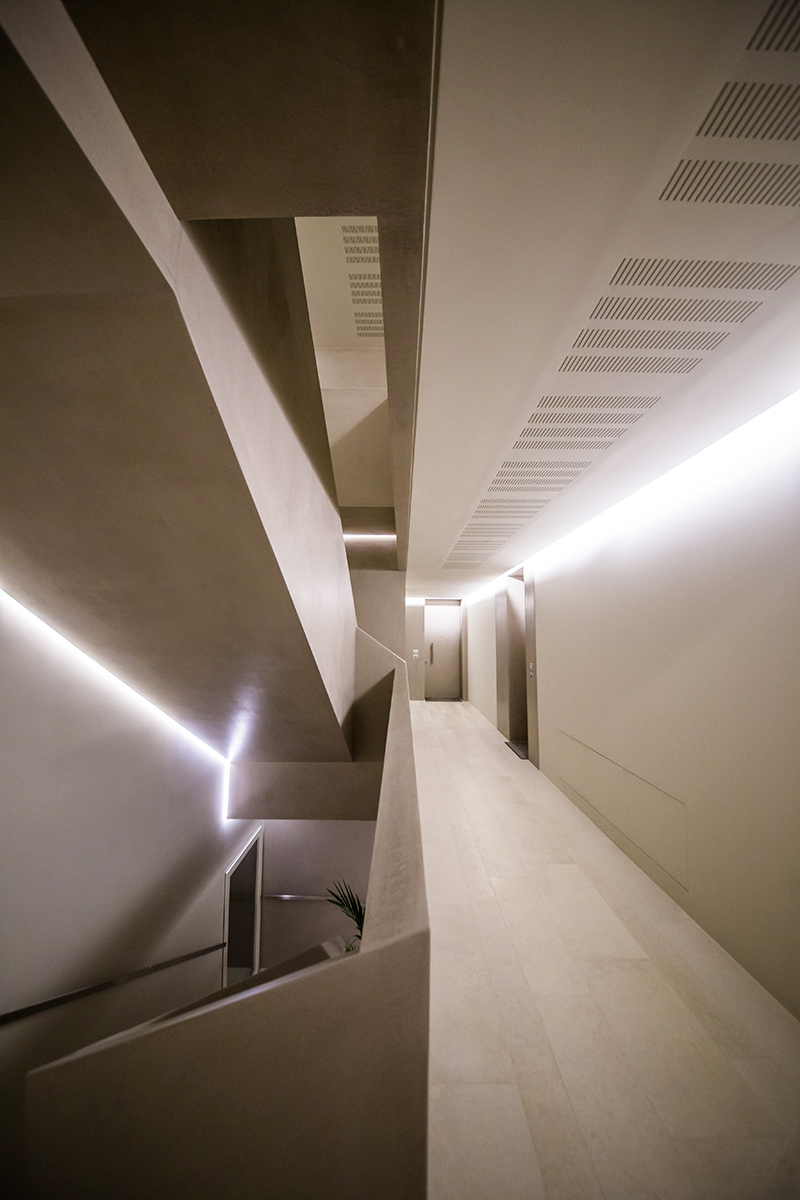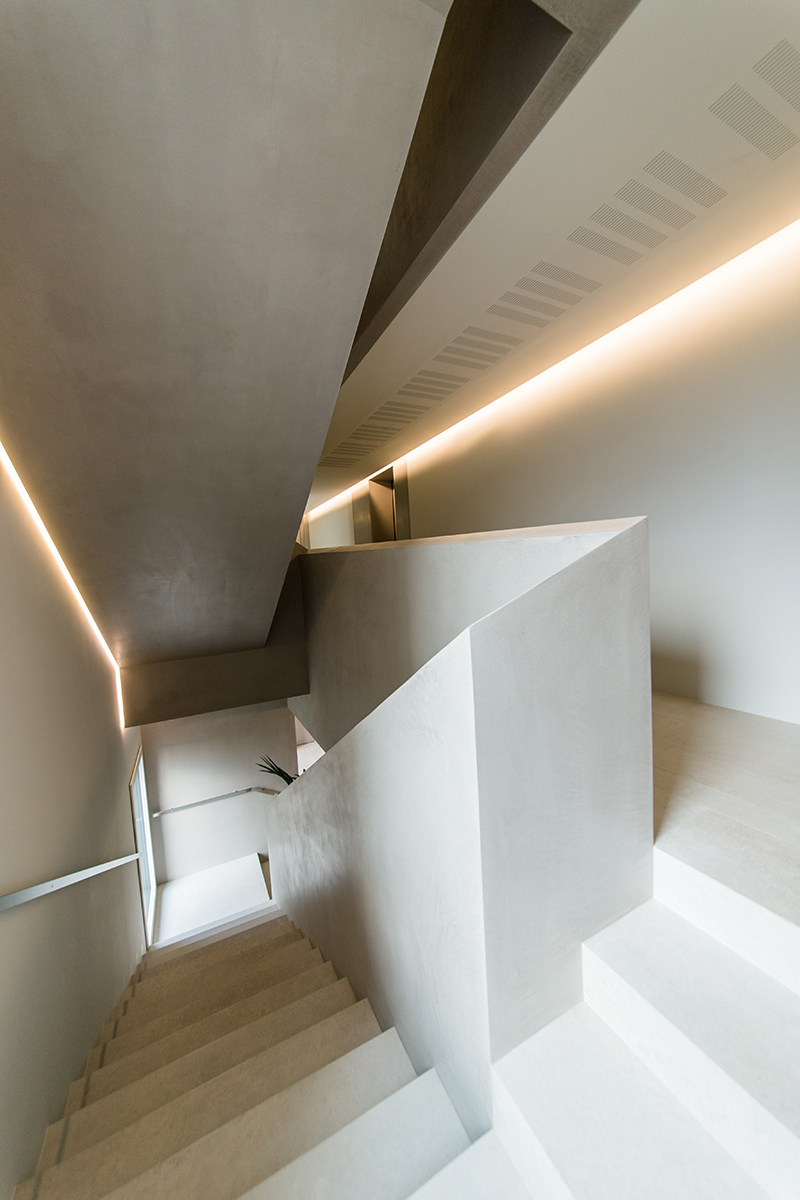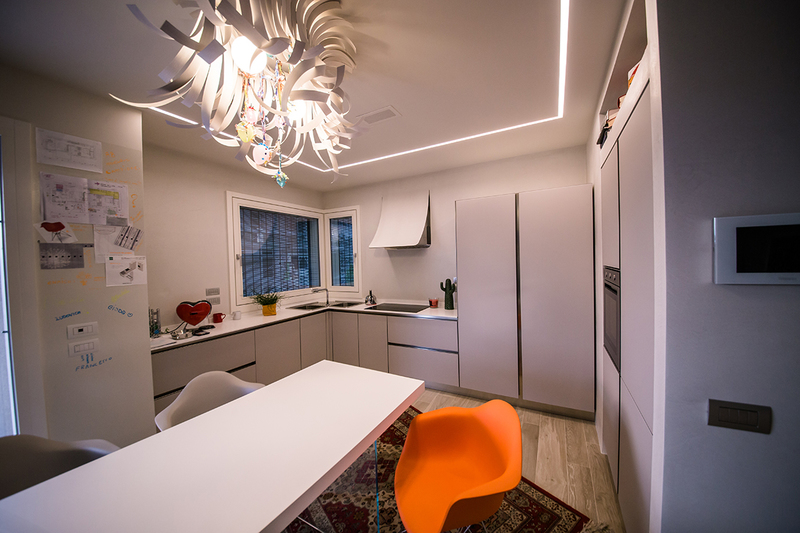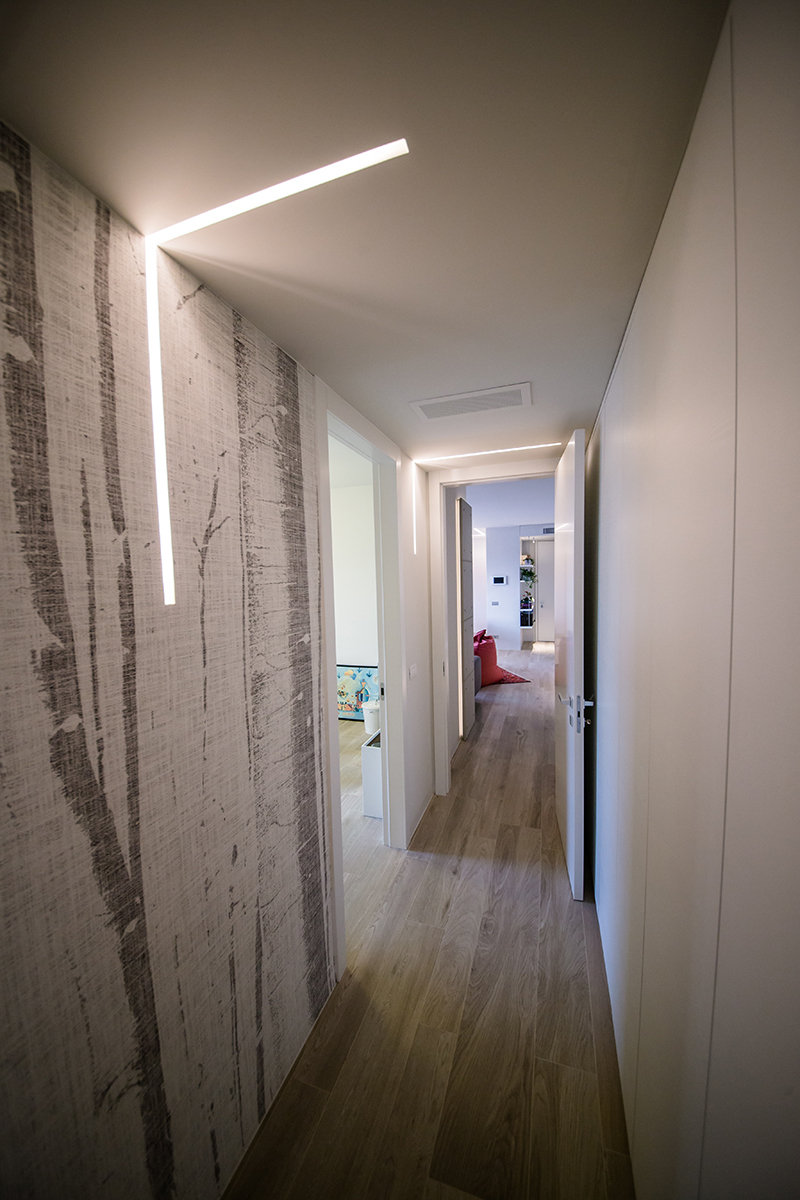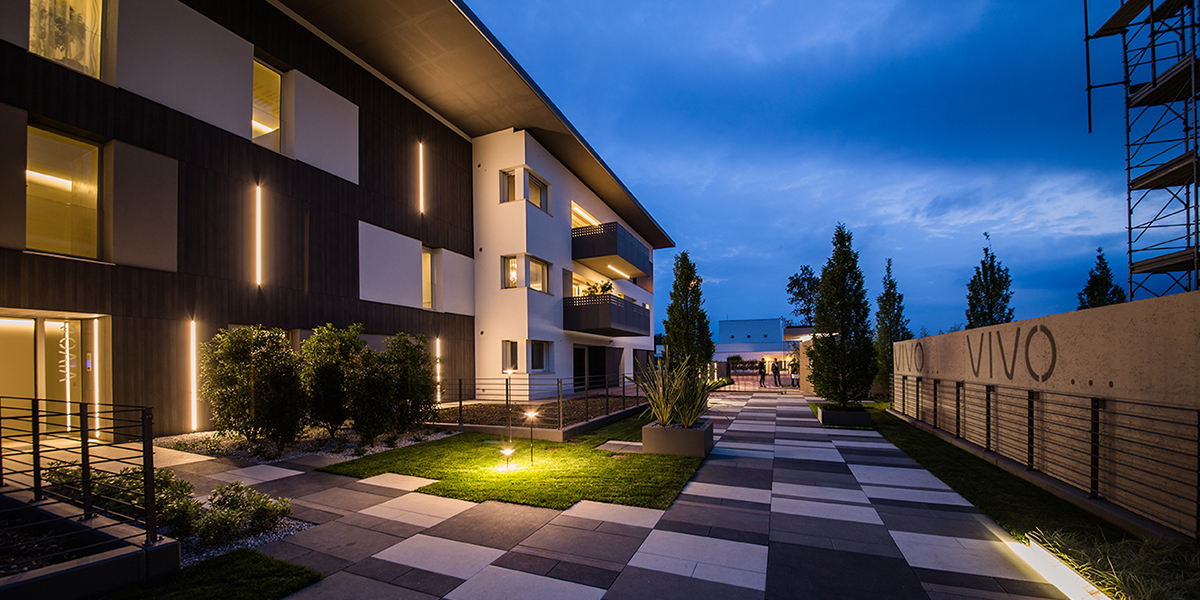"VIVO" Residence
Ponzano Veneto (TV), Via Diritti dell'Infanzia 8 – end of works May 2016
Designer: B+B Associati
A new concept of quality living...
The acoustic comfort of a house…inside an apartment: the case of the VIVO residence in Ponzano Veneto (TV)
A recent report by the World Health Organization (WHO) has uncovered an alarming fact: the European population identifies the noise caused by neighbors as the second cause of sleep disturbance during the night, while the first cause is traffic noise. Over the course of the evaluated period, since 1993, the percentage of people that feel bothered by noise has increased. The most irritating noises are contact noises, i.e. the type of noise that spreads via a solid medium (footsteps, dragging chairs, objects falling on the ground). These sounds are very common in apartment buildings, while completely non existent in detached houses.
Keeping this exact point in mind, Crema Costruzioni S.n.c. has been designing apartment buildings with exceptional soundproofing features for years. The architectural system requires an effective stratigraphy, in which concrete, brick, soundproofing and anti-footsteps drywall contribute to the reduction of airborne noise higher than 77 dB (value measured in use with measuring instruments).
The VIVO Residence, built recently in Ponzano Veneto (TV), is an example of this architectural system, for which Eterno Ivica has contributed with the supply of 7 mm thick DYNAMIC DPCM sound insulation and vibration-damping DIN STOP hanging elements for the soundproofing false ceiling. The partition floor slab, composed of a reinforced concrete base and its screeds, has a weighted normalized impact sound pressure level L’nw = 35 dB. The customized acoustic insulation not only fully conforms with the limits dictated by the law, but offers an exceptional acoustic comfort as well, giving the impression of living in a detached house.
The acoustic insulation against footsteps is provided by the resilient material, the stability of which needs to be guaranteed over time, under the weight of the screed. In fact, just like it would happen with the majority of polymeric or fibrous materials, the weight of the screed tends to progressively warp the anti-footsteps material, causing the floor to lower. This phenomenon, known as cold flow or creep, needs to be adequately limited over time to values below the 10% of the thickness of the resilient layer. To this end, the anti-footsteps products need to be pre-emptively certified in the laboratory to ensure their compliance with this parameter.
Furthermore, the realization of soundproofing false ceilings needs to include the installation of vibration-damping hanging elements to the floor slab above. It is indeed fundamental to keep in mind that in many cases the acoustic insulation provided by the false ceiling has been negative: the stiff anchorage of the drywall plates on the floor slab can even cause the reduction of the acoustic insulation compared with the absence of the false ceiling. This phenomenon is even more common when it comes to the insulation against footsteps.
From a technical point of view, acoustic insulation techniques like the ones described before prove how the direct transmission of noise gets almost completely eliminated, allowing just a fraction of the flanking transmissions.
The concrete-brick-drywall mix architectural system used for the VIVO Residence is commonly used in the realization of music rooms and of potentially noisy public venues, that is in situations in which the acoustic insulation required is extremely high, comparable only to the levels measured in the laboratories of certification institutes.
